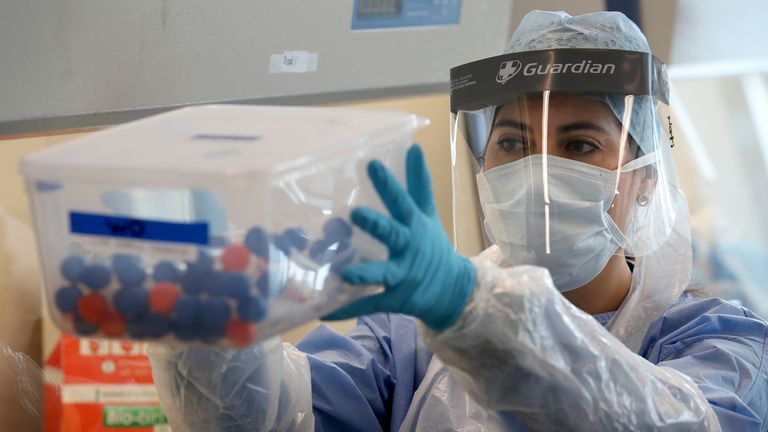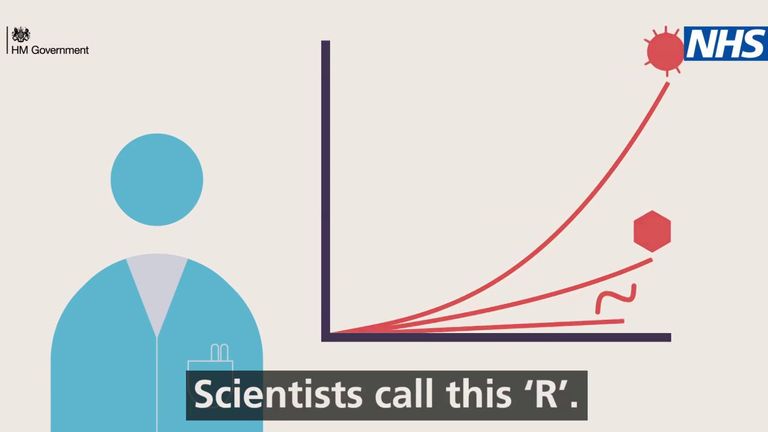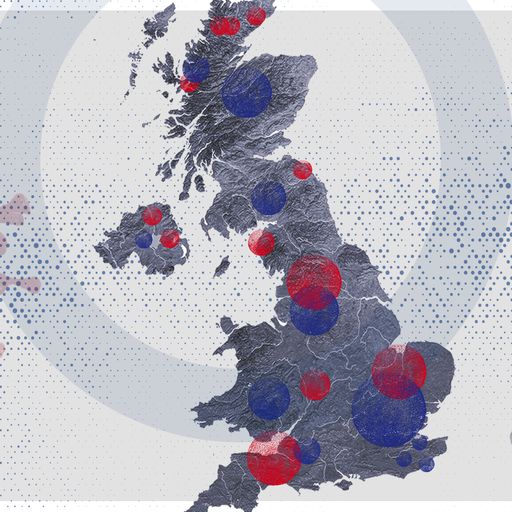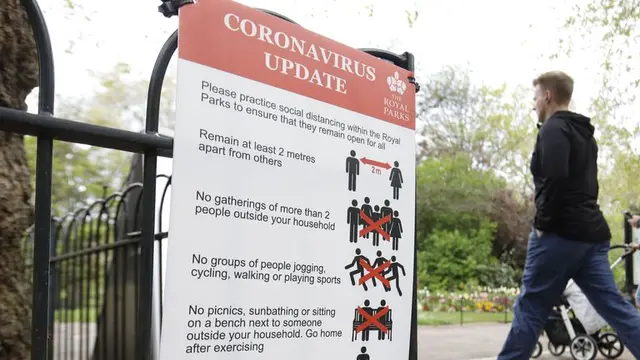Good news. The R is down.
As chief scientific officer Sir Patrick Vallance put it at today's press conference: "The R is below one. We think it's between 0.6 and 0.9, across the nation.
"Maybe a little lower in some places, maybe a little higher in others, but it's below one across the country."

Image:'R' will be easier to track as testing increases
Translation? The
lockdown has worked
. We have, through collective social distancing, slowed the spread of the virus.
It is no longer spreading with the terrifying speed which caused
deaths to rise
so sharply, jumping from 200 to 26,000 in barely a month.
This is the meaning of R, perhaps the most crucial scientific figure in the entire
coronavirus
crisis.
It is, at its core, a measure of speed.
R, or "R zero" as it is often called, is shorthand for reproductive rate.
It is a measure of how many people, on average, will be infected for every one person who has the disease.

The video was shown during the daily Downing Street briefing on coronavirus.
If the R is one, then one person with the disease infects one other person. If it is three - which the prime minister said seemed to be the "natural rate" for coronavirus - then one person will infect three.
The reason this seemingly small number is so important is because of the way it grows over time.
If 100 people have the virus and the reproduction rate is three, then 300 people will be infected. In turn, they will infect 900 people, who will infect 2,700 people.
Before too long, the numbers start to get very large, very quickly. They become what mathematicians call exponential.
This is what happened in the first phase of this crisis. It is exponential growth which caused the curve of cases and deaths to turn upwards with such speed.
This will happen again, as chief medical officer Professor Chris Whitty told the briefing today, any time the R goes above one - even if it is 1.1 or 1.2.
**:: Listen to the All Out Politics podcast on **
Apple Podcasts
**, Google Podcasts
, Spotify
, Spreaker
**
"As soon as R goes above one, you restart exponential growth," he said.
"Sooner or later, the NHS will go back to the risk of being overwhelmed and the number of cases will tick up."
That's why, as Boris Johnson said: "Keeping the R down is going to be absolutely vital to our recovery."
If we can keep the R below one, then the growth of the pandemic will slow - indeed, it will slow exponentially.
If it ticks even slightly above one, then the pandemic will start to grow again, which will almost inevitably require further lockdown measures.
Mr Johnson suggested as much when he said that "the government will be monitoring R very carefully. It will be a key factor in how social distancing measures will be used in the future".
To me, this seems as if R will be the measure for both present and future lockdowns, just as it is for epidemiologists.

Coronavirus UK tracker: How many cases are in your area
There have been mutters of discontent about the government's insistence that it is "following the science". At least in principle, basing decisions on R will do just that.
But there is, if not a catch, then definitely some uncertainty, which could be seen in the discussion at the briefing.
When Sir Patrick Vallance named R, he didn't give a precise figure.
He said he "thinks" it's between 0.6 and 0.9, across the nation. That's a fairly broad range.
Measuring R effectively is hard. There are lots of factors that go into it, it may vary from place to place, and to estimate it accurately requires a large number of tests.
It's also hard to track the reproduction number in real time, because there is a delay between the moment people are infected and cases showing up in the data.
As the infection goes on and the number of tests rises, R will become easier to track, but, especially at the beginning, being precise about it will not be straightforward.
Remember how, in the days before the lockdown, there was an argument about modelling, with many demands to "show us the data"?
With so much depending on a fuzzy number, Boris Johnson and his scientific advisors may find themselves back in the same place - not because they are hiding anything, but because they may struggle to provide the absolute clarity people so desperately want.
 简体中文
简体中文

